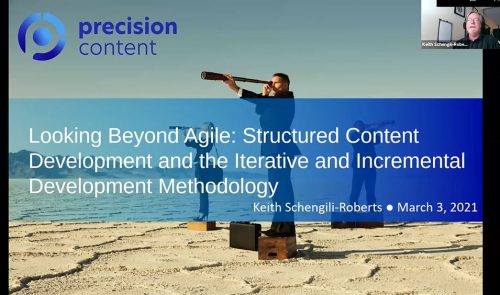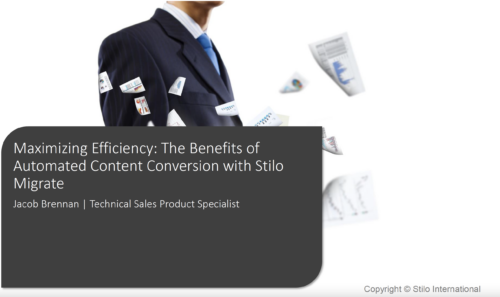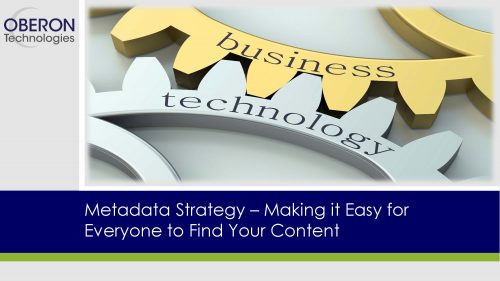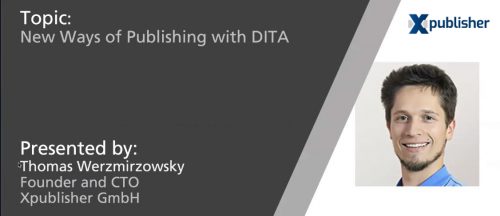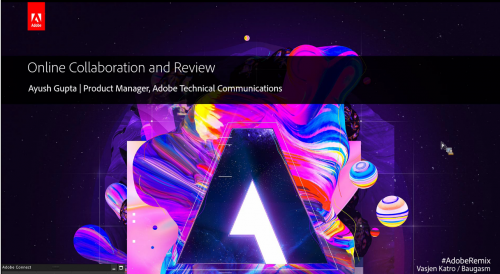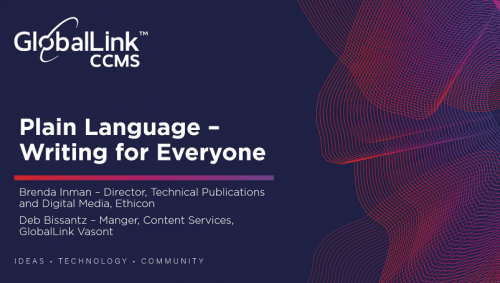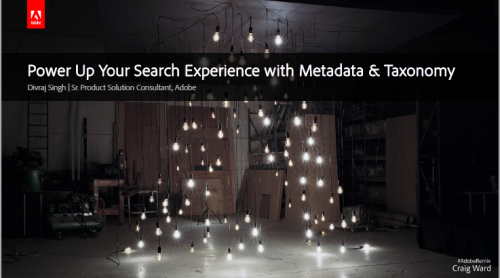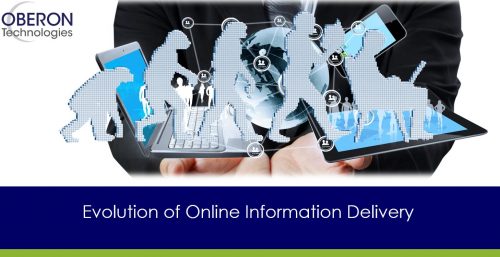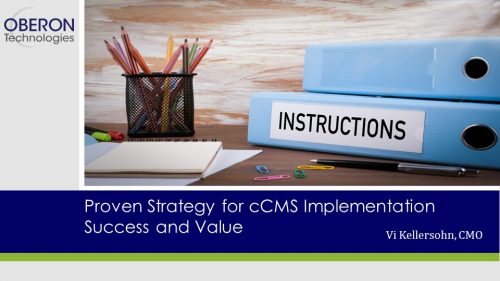-
March 3, 2021 This webinar is free. Agile development makes specific demands on documentation teams, whose content creators need to be nimble, describe features in a piece-meal fashion, and find ways to report on their content development progress. Structured content is ideally suited to these needs. But experience has shown that some teams find it hard to move fully to an Agile methodology, often using an uneasy mix of waterfall and Agile processes. Precision Content’s Keith Schengili-Roberts will talk about the current state of Agile and structured content, and also give an introduction to the Iterative and Incremental Development (IID) methodology, a recent Agile offshoot that works well for technical writing teams. If you are wondering about what the impacts are of working with Agile or are simply looking to optimize your DITA-based documentation processes, this presentation is for you! Presented by: Keith Schengili-Roberts is a Content Specialist and Information Architect at Precision Content. Keith is also an award-winning lecturer on Information Architecture at the University of Toronto’s Faculty of Information, and the Chair of the OASIS DITA Adoption Committee. He is also the writer behind the “DITAWriter.com” website, which has long been a useful resource for those working with the DITA XML standard. He lives in the north end of Toronto with his long-time girlfriend Dhan and her two noisy green-cheeked conures.
-
Recorded on May 24, 2023
 In this webinar, we'll discuss the benefits of using Stilo Migrate for automated content conversion. With Stilo Migrate, you can save time and resources by eliminating manual content conversion. We will discuss how an automated conversion is superior to a manual conversion in avoiding headaches such as incorrect styling and automatic table conversions. Join us to learn how Stilo Migrate can streamline your content conversion process and save you valuable time and resources.
Presented by Jacob Brennan
In this webinar, we'll discuss the benefits of using Stilo Migrate for automated content conversion. With Stilo Migrate, you can save time and resources by eliminating manual content conversion. We will discuss how an automated conversion is superior to a manual conversion in avoiding headaches such as incorrect styling and automatic table conversions. Join us to learn how Stilo Migrate can streamline your content conversion process and save you valuable time and resources.
Presented by Jacob Brennan
 Jacob Brennan is a Technical Sales Product Specialist at Stilo. He works with Stilo Migrate customers and aids in converting their legacy content to DITA. Jacob is a recent graduate from the University of Ottawa holding a BASc. in Mechanical Engineering and a BSc. in Computing Technology.
Jacob Brennan is a Technical Sales Product Specialist at Stilo. He works with Stilo Migrate customers and aids in converting their legacy content to DITA. Jacob is a recent graduate from the University of Ottawa holding a BASc. in Mechanical Engineering and a BSc. in Computing Technology. -
September 17, 2019 When your users can’t easily find your information online, they may turn to the competition. When your writers can’t find the content they need, they will recreate it. And, when your organization doesn’t have a common strategy to identifying information across the enterprise you are wasting valuable resources as they search to find needed information. Whether in document properties, a keyword spreadsheet or within your content management systems, metadata is a key to findability. Learn how a metadata strategy adopted by all the content creators can make it easier for everyone inside and outside your organization to find the information they need. Presented by: Todd Burdin is a senior solution architect and strategic business consultant with 25+ years of software development and business consulting expertise, encompassing the entire content development lifecycle. He has extensive experience delivering innovative enterprise solutions for content management, structured authoring, and publishing to a diverse set of industries, including equipment manufacturers, pharmaceuticals, legal mediations, hospitals, and financials. Todd has worked at Oberon Technologies for 6+ years. Previous employers include PTC, Arbortext, Entrusted Solutions, and First Consulting Group.
-
June 10, 2021 The Xpublisher editorial system organizes every piece of content – regardless of how it will be used later – to provide fast, error-free, and highly cost-effective multichannel digital and print publishing. Preparing your content for a variety of formats and channels couldn’t be easier. In this webinar, Thomas Werzmirzowsky will present new ways of DITA integration with Xpublisher. Xpublisher offers the best possible data quality with XML-based data management and is a pioneer for the challenges of the future by presenting new solutions: the simple creation, management, and publication with DITA. Presented by: Thomas Werzmirzowsky is founder and Chief Technology Officer at Xpublisher GmbH, a leading software provider specialized in the area of XML publishing. Since 2009, the company has been advising numerous leading international companies and organizations from the aerospace, technology, education, publishing, public administration and many other industries in the area of multichannel publishing and accompanying them on their way to digitization.
-
December 14, 2021 Attend this webinar if you’re looking to:
- Provide your audience with content that is accurate and compliant
- Align your global workforce with One Voice
- Accelerate your time to market thanks to less time for review and editing
- Reduce your source content and translations by 40%
- Show industry credibility by complying with industry standards to help open new markets
-
June 10, 2020 Abstract World has seen a very different modus operandi in the last couple of months. This only emphasizes the fact that collaborating without physically being in the same space is fast becoming the norm where team members are either located in different geographical locations or are working from home. At this time, a smooth review and collaboration process for technical content can be a real boon to your organization. In this session, Ayush Gupta, Product Manager at Adobe, will discuss how organizations can transform their mundane, time consuming and cyclic review process into a more meaningful, error-free and productive collaboration experience for Content Creators and Subject Matter Experts (SMEs). Key takeaways:
- Why rethink about current review processes
- What are the benefits of adopting online review process for DITA content
- What are the basic tenets and features of an online review process
- A walkthrough of a typical collaborative review workflow and how to make it an experience for business users
-
Recorded on February 7, 2024
 When should regression testing be performed?
Regression analysis of PDFs allows you to test system changes, changes to CMS, changes to stylesheet, changes to formatting software, and changes to graphic software.
Regression testing should take place anytime your system, hardware, or software changes to determine if what was correct in the output is still correct in output. Changes may result in content disappearing, incorrect formatting, changes to the integrity of images and tables, and many other (sometimes subtle) issues that invalidate the reliability of the document.
Antenna House Regression Testing System is for Automated – Fast – Accurate PDF to PDF & Image to Image Visual Comparisons
When should regression testing be performed?
Regression analysis of PDFs allows you to test system changes, changes to CMS, changes to stylesheet, changes to formatting software, and changes to graphic software.
Regression testing should take place anytime your system, hardware, or software changes to determine if what was correct in the output is still correct in output. Changes may result in content disappearing, incorrect formatting, changes to the integrity of images and tables, and many other (sometimes subtle) issues that invalidate the reliability of the document.
Antenna House Regression Testing System is for Automated – Fast – Accurate PDF to PDF & Image to Image Visual Comparisons
Presented by Michael Miller

Michael Miller is Vice President of Antenna House, Inc., a company that has developed one of the leading standards‐based (XSL‐FO and CSS) document formatting software products on the market today. Michael has a degree in Printing Engineering and Management and has been involved in high‐end composition, document formatting, and document management for over 40 years. He has an extensive background with structured data, including SGML, XML, S1000D, and DITA. During his career, he has worked in Europe and North America and has been involved in the implementations of some of the largest fully automated publishing and document formatting projects.
-
April 21, 2021 The Plain Writing Act of 2010 requires federal agencies to follow plain language guidelines for government documentation. In addition, Section 508 standards require all information and communications technology to be accessible to disabled users. Besides meeting these requirements, are there other advantages for technical writers who use plain language? Yes, there are! Brenda Inman and Deb Bissantz will explore examples of overly verbose information that can be written using plain language to convey the information more clearly. While exploring these examples, Brenda and Deb will also share benefits, guidelines, and tips for using plain language. What can the audience expect to learn? Attendees will learn to recognize opportunities for using plain language, such as when to use a $0.50 word instead of a $5.00 word. Attendees will also learn tips for writing clear, concise information using plain language. Presented by: Deb Bissantz is a Content Services manager for GlobalLink CCMS. Deb’s mission is to partner with organizations to make the most of their DITA and component content management solutions. Before joining GlobalLink CCMS, Deb worked with and authored DITA content for many years. As a writer and tools administrator, she helped several organizations migrate technical documentation to DITA and to a CCMS. Deb is a voting member of the DITA Technical Committee. Brenda Inman is the Director of Technical Publications for Robotics and Digital Solutions at Ethicon, part of the Johnson & Johnson family of companies. Brenda has worked in the medical device her entire career mostly within technical publications and localization and also has experience in clinical research and regulatory affairs. Brenda’s experience within technical publications and localization includes writing user manual content, implementation of content management systems, and setting up best practices for writing and localization.
-
May 13, 2020 There is an explosion of content today. But what makes your content stand out is – relevance and searchability. To ensure that customers don’t have to spend hours searching through your content, metadata is key. And to know what metadata to add while authoring, a well-established taxonomy is key. To design a truly best-in-class content search experience metadata and taxonomy need to work in tandem. In this webinar we will showcase:
- How to leverage metadata to make your content searchable
- What is the difference between good and bad taxonomies
- A live example of taxonomy development using Adobe Experience Manager
-
May 21, 2019 As technology advances so do consumer expectations for online information access. No longer do users want to rely on printed materials nor are we satisfied with views of lengthy PDFs online. Consumers, both inside and outside your organization, want to quickly find just the information they need from any device. With the emergence of many connected products, virtual and augment reality the online information demands can be staggering. Is your documentation system ready to take you into the future? Find out how many organizations are taking steps to delivering better information today and prepare their organization to more easily evolve with technology advances and consumer demands. Attendees will learn: 1) What does the evolution of online delivery include? 2) How structured content impacts your future delivery options? 3) Why you don’t have to wait to begin improving your users’ online delivery experiences? Presented by: Vi Kellersohn is the Chief Marketing Officer of Oberon Technologies. Vi leads the marketing efforts, manages strategic partnerships and supports key client projects. For over 20 years Vi has managed and executed all aspects of marketing for B2B technology organizations working in partnership with sales management to build awareness for value opportunities across the content lifecycle. Vi enjoys spending time with her extended family and golfing with her husband and two sons.
-
October 9, 2019 Delivering a cCMS solution on time and on budget is critical, but it’s important to recognize that the cCMS is only one part of a successful content lifecycle strategy. Making sure your content can be leveraged across the enterprise and your system will be able to support future initiatives requires a comprehensive and proven plan. Having led hundreds of successful content solution implementations, Oberon understands the differences in the tools, processes and environments that must be considered. While each cCMS implementation plan may be unique, shaped by the specific needs of a given company, there are many common steps to success that everyone should follow. Whether you are looking to adopt cCMS for the first time or you’ve been using one for years, there are ways to ensure your system is optimized for success. Attend this webinar and find out what your plan should include. Presented by: Vi Kellersohn is the Chief Marketing Officer of Oberon Technologies. Vi leads the marketing efforts, manages strategic partnerships and supports key client projects. For over 20 years Vi has managed and executed all aspects of marketing for B2B technology organizations working in partnership with sales management to build awareness for value opportunities across the content lifecycle. Vi enjoys spending time with her extended family and golfing with her husband and two sons.
-
Recorded on November 16, 2022

Multilingual content is fundamental for successful communication with other people, cultures, and markets. Naturally, the quality of translations is of central importance. Often, these quality assurance processes are unsystematic and rely on spontaneous “feedback” from in-country reviewers. However, more often than not, these review processes lead to long waiting times, frustrating discussions, no real process improvements, and thus impede strategic and sustainable language quality management.
We share how
- to define translation quality
- to measure translation quality
- to involve and instruct all stakeholders
- to manage translation quality actively and sustainably
Join us to learn which aspects and stakeholders you need to take into consideration on your way to successful quality management of multilingual content.
Presented by Klaus Fleischmann Klaus Fleischmann studied translation and IT in Vienna, holds an MA in Conference Interpreting from Monterey, California, and a MAS in Technical Communication from Krems, Austria. In 1996, he founded Austria-based Kaleidoscope, a company implementing content, translation, and terminology management processes for internationally active companies. Kaleidoscope develops online collaboration software for enterprise-level terminology workflow, translator query management, in-country review etc., making the translation quality process comprehensible and strategically manageable. In 2007, he became CEO of Austria´s leading LSP, Eurocom Translation Services. Always active in the industry, Klaus got voted into the Gala Board of Directors in 2015 and 2017.
Klaus Fleischmann studied translation and IT in Vienna, holds an MA in Conference Interpreting from Monterey, California, and a MAS in Technical Communication from Krems, Austria. In 1996, he founded Austria-based Kaleidoscope, a company implementing content, translation, and terminology management processes for internationally active companies. Kaleidoscope develops online collaboration software for enterprise-level terminology workflow, translator query management, in-country review etc., making the translation quality process comprehensible and strategically manageable. In 2007, he became CEO of Austria´s leading LSP, Eurocom Translation Services. Always active in the industry, Klaus got voted into the Gala Board of Directors in 2015 and 2017.

